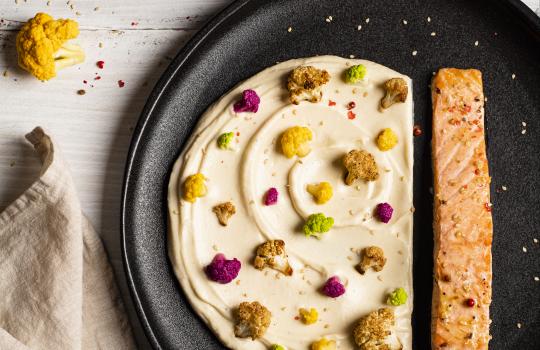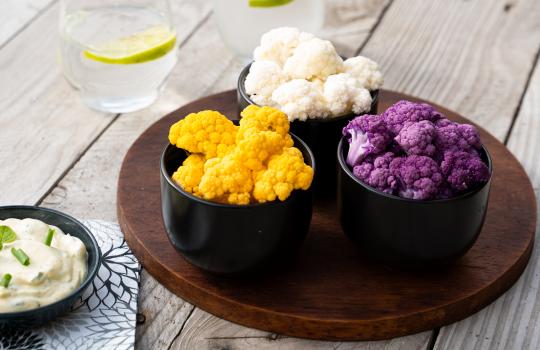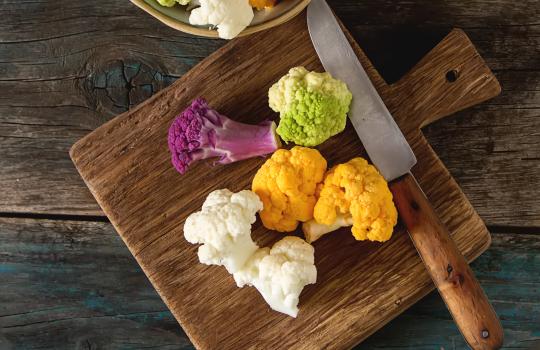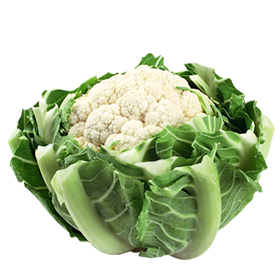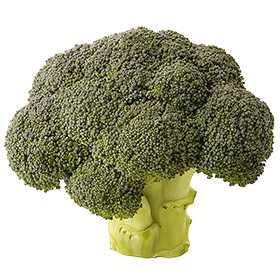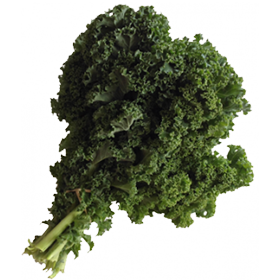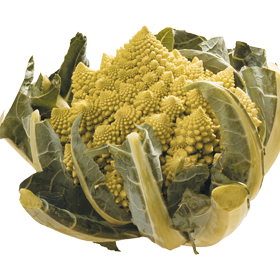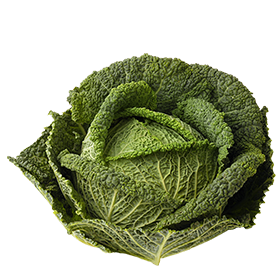Coloured cauliflower
1.5 kg
Weight
May - Nov.
Season
Harvested
by hand
Packed
in the field
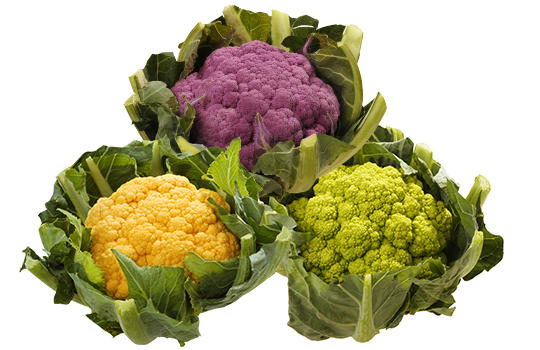
Season
- Peak season
- Available
- Not available
Did you know?
For ages, cauliflowers were naturally colourful. Today we usually think of cauliflower as white but this is the result of successive crosses that have produced our current white varieties. Older varieties of cauliflower naturally showed a great diversity of colours and it is these varieties which, brought up to date, are grown by Prince de Bretagne’s market gardeners.
Colour pigments are naturally created by the plants:
- The orange pigment comes from carotene, which is found in carrots, and is a precursor of vitamin A.
- The purple pigment is from the powerful antioxidant anthocyanin family.
- And finally, green cauliflower owes its colour to the presence of chlorophyll which makes it sweet!
Entirely harvested by hand using a knife, coloured cauliflowers are placed on a belt which transports them inside a trailer. The coloured cauliflowers are then immediately placed in wooden crates, ready to be delivered (in a mix of colours or by colour). Packing in the field is a guarantee of optimal freshness on your plate!
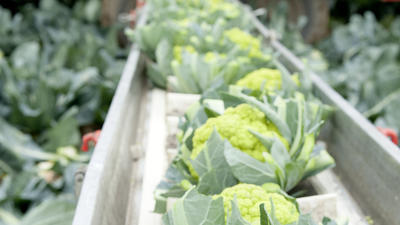
Cooking tips
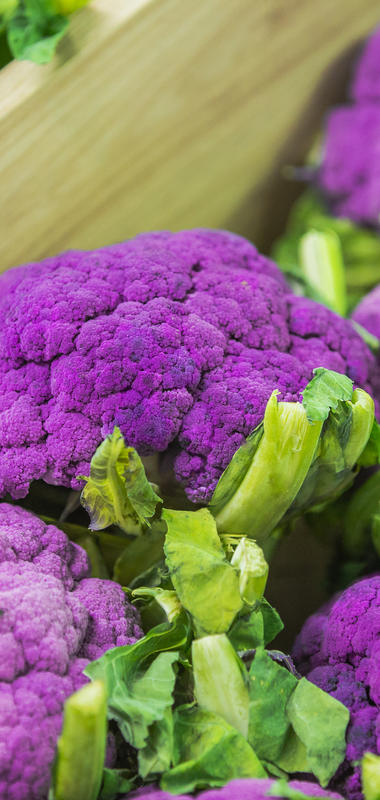
HOW TO CHOOSE COLOURED CAULIFLOWER
The head of the cauliflower should be bright and uniform in colour. The head should be very firm and the look of the leaves surrounding it provide clues to its freshness.
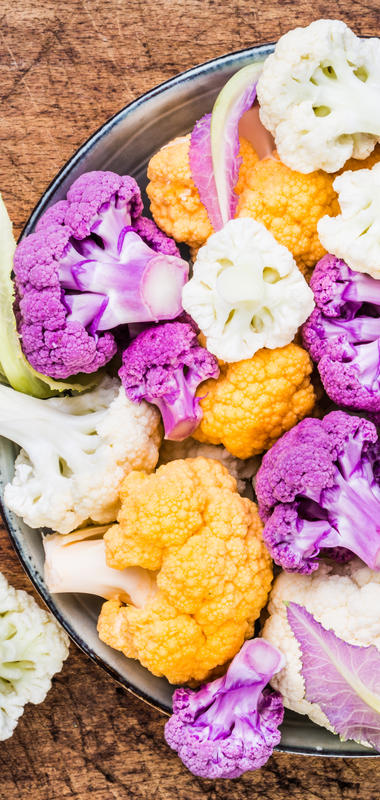
HOW TO PREPARE COLOURED CAULIFLOWER
Coloured cauliflowers are prepared like their white cousins. Start by removing the leaves and washing the cauliflower.
Then everything depends on your recipe!
To prepare your cauliflower as couscous or rice, grate it in a food processor like you would for grated carrots (cut it into florets first) if you are pushed for time. Otherwise, using a manual grater works too.
You can also cut the cauliflower into florets for an aperitif or cooked dishes. You won’t necessarily need the core, so save it for a soup.
Some people love to eat cauliflower in thick slices, cooked like meat. Save the unsliced cauliflower for salads, soups etc.
You can also cook roast the entire head.
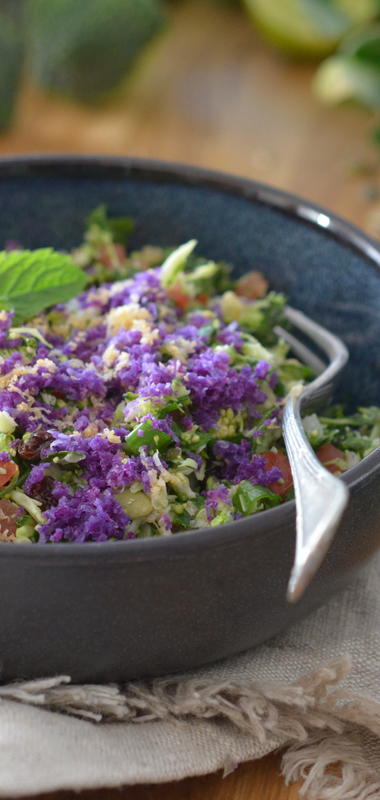
HOW TO COOK COLOURED CAULIFLOWER
Coloured cauliflowers are varieties with a slightly milder and sweeter taste than their white cousins. Coloured cauliflower florets can be eaten raw or cooked. For cooking, allow:
10 to 15 mins
In boiling water
5 to 10 mins
Steam cooking
10 mins
Fried in a wok (blanch first)
30 mins
In the oven
You can also roast cauliflower in the oven or pan-fry a slice of it.
Coloured cauliflower couscous can be eaten raw in tabbouleh but also cooked in the microwave for a few minutes before being incorporated into a cake preparation or fried in a wok or pan-cooked in a risotto. Cooking is very rapid and low in odour!
Here are some simple tips for maintaining the beautiful colour of these cauliflowers:
- Avoid submerging them in water. They are better steamed or fried. Steaming will very slightly discolour the cauliflower (tip: stop the cooking by immersing the florets in iced water). Sautéed, cauliflowers will retain their original colour, though will brown a little.
- To be 100% sure of retaining the colour: eat them raw!
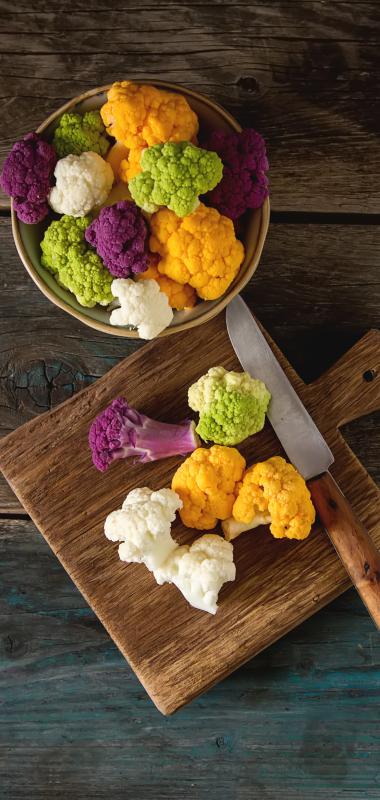
HOW TO STORE COLOURED CAULIFLOWER
Cauliflower will keep for 2 or 3 days in the salad drawer of your fridge. But it will keep even better if you first wash it, divide it into florets and put the pieces in an airtight container.
Cauliflower can also be frozen (blanch first).
Cooking suggestions
Coloured cauliflowers are just as good for an aperitif (in dips) as a starter or a main course! These coloured cauliflowers will really liven up plates.
Coloured cauliflower can help introduce your kids to this vegetable because the colours add a playful touch to food. They can be eaten as cauliflower couscous which can be cooked in many ways. For example, it can replace starchy foods in a tabbouleh. Equally, it can also be an ingredient in a dish.
Chef’s tip
Grate these coloured cauliflowers on all your starters and main courses for colourful and delicious dishes!
Nutrition
All 3 types of coloured cauliflower (orange, green and purple) are high in vitamin C. Green cauliflower is also a source of potassium, vitamin K and vitamin B9 (folic acid).
| Energy (kj/kcal) | 76/18 |
|---|---|
| Fat (g) | <0.2 |
| of which saturated fat (g) | |
| Carbohydrate (g) |
1.1 |
| of which sugar (g) | 1.1 |
| Dietary fibre (g) | 1.9 |
|
Protein (g) |
2.5 |
| Salt (g) | 0.02 |
| Vitamin C (mg) | 27.5 |
| Energy (kj/kcal) | 114/27 |
|---|---|
| Fat (g) | <0.2 |
| of which saturated fat (g) | |
| Carbohydrate (g) |
3 |
| of which sugar (g) | 3 |
| Dietary fibre (g) | 2.5 |
| Salt (g) | 0.02 |
| Vitamin C (mg) | 44.9 |
| Folic acid (B9 in µg) |
57 |
| Vitamin K (µg) | 20.2 |
| Potassium (mg) | 300 |
| Energy (kj/kcal) | 90/21 |
|---|---|
| Fat (g) | <0.2 |
| of which saturated fat (g) | |
| Carbohydrate (g) |
1.6 |
| of which sugar (g) | 1.6 |
| Dietary fibre (g) | 2.1 |
|
Protein (g) |
2.7 |
| Salt (g) | 0.02 |
| Vitamin C (mg) | 36.5 |


